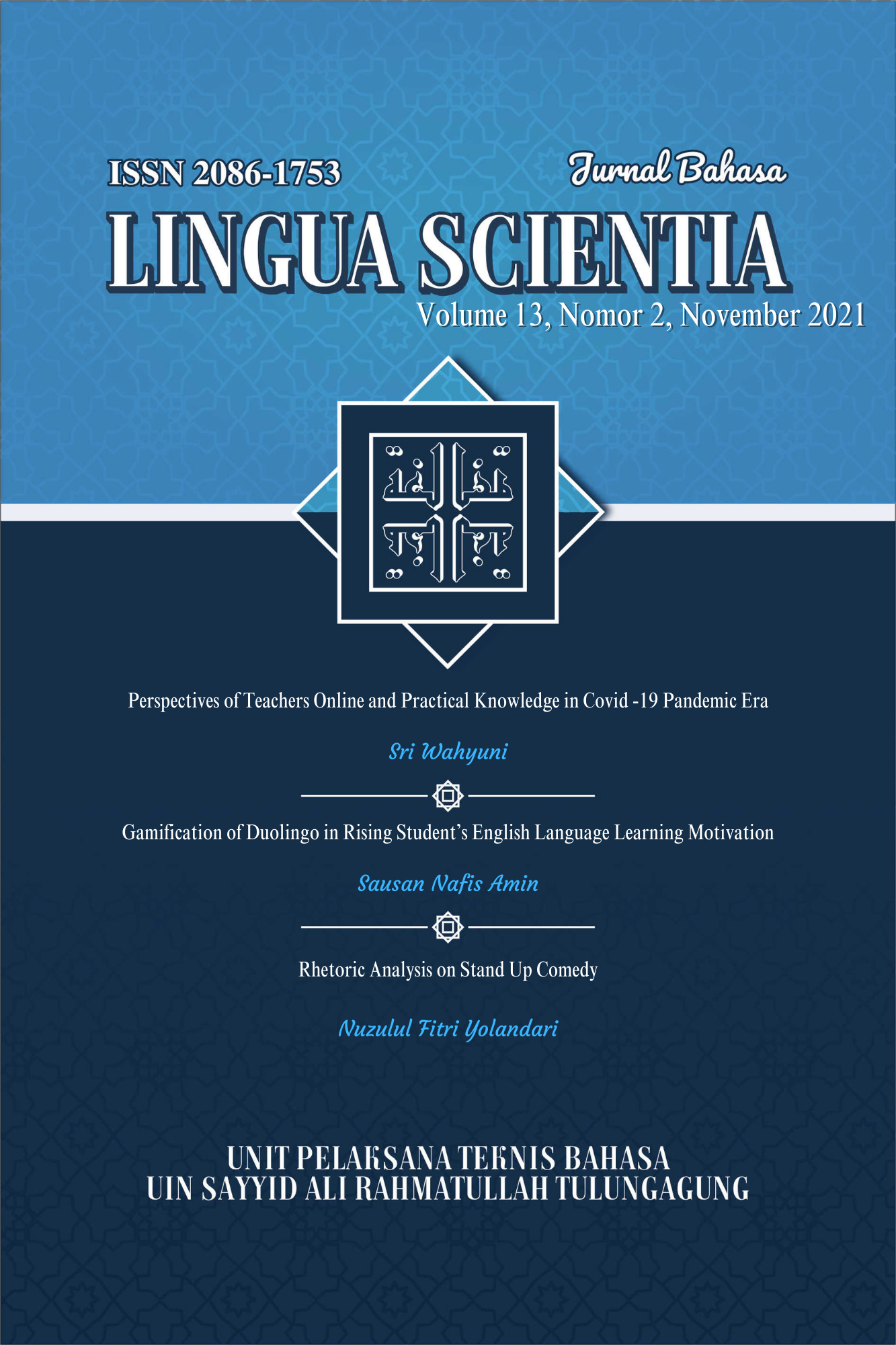RHETORIC ANALYSIS ON STAND UP COMEDY
Abstract
This kind of discourse has some specific characteristics in terms of its creation and language use. A qualitative study was conducted with the data source from stand-up comedy records. The data were reduced to obtain the funniest humor discourse. Furthermore, the data were analyzed based on the creation technique and the construction elements of humor discourse in terms of linguistic and non-linguistic context. The research findings showed that the creation technique and the construction elements of stand-up comedy humor discourse in local perspective in Indonesia were in line with the general concepts and theories of humor discourse creation techniques namely: (a) rhetoric, (b) tone variation, (c) irony, (d) language misunderstanding, (e) wordplay, (f) verbal jokes, (g) sarcasm, (h) satire, (i) sexual satire, and (j) deception. In addition, the results confirmed that the most widely used of creation techniques were rhetoric, wordplay, and deception. The three techniques are more pronounced than other techniques due to the local comics circumscribed public speaking capability.
Downloads
References
Astika, G. (2015). Extensive Listening: Design and Its Implementation. the 62nd TEFLIN International Conference (pp. 287-294). Bali: Udayana University Press.
Brown, S. (2006). Teaching Listening. Cambridge: Cambridge University Press.
Chang, A., & Millet, S. (2014). The Effect of Extensive Listening on Developing L2 Listening Fluency: Some Hard Evidence. ELT Journal, 68(1), 31.
Gilliland, B. (2015). Listening Logs for Extensive Listening Practice. In D. Nunan, & J. Richards, Language Learning beyond the Classroom (p. 15). New York: Routledge.
Hapsari, Y., & Ratri, D. (2014, October). Extensive Listening: Let Students Experience Learning by Optimazing the Use of Authentic Materials. Bahasa Sastra, 14(2), 50-62.
Kemp, J. (2010, October). The Listening Log: Motivating Autonomous Learning. ELT Journal, 64(4), 385-395.
Nation, I., & Newton, J. (2009). Teaching ESL/EFL Listening and Speaking. New York: Routledge.
Renandya, W., & Farrel, T. (2011). Teacher, the Tape is too Fast! Extensive Listening in ELT. ELT Journal, 65(I), 52-59.
Richards, J. (2008). Teaching Listening and Speaking, from Theory to Practice. Cambridge: Cambridge University Press.
Waring, R. (2008). Starting Extensive Listening. The Journal of Extensive Reading in Japan, I(I).
Copyright (c) 2021 Nuzulul Fitri Yolandari

This work is licensed under a Creative Commons Attribution-NonCommercial 4.0 International License.
Before going to review process, all manuscripts will be checked that they are free from plagiarism practice using "Turnitin" software. If there is an indication of plagiarism, the manuscript will instantly be rejected.


